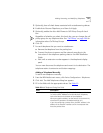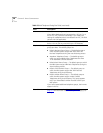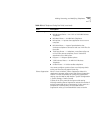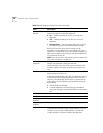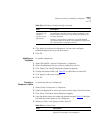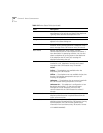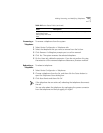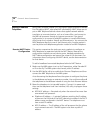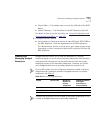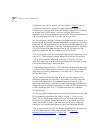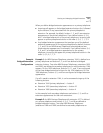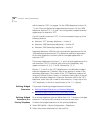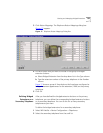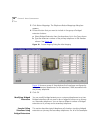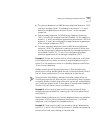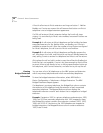
Creating and Managing Bridged Extensions 135
■ Subnet Mask — The address mask in use on the LAN side of the NAPT
device.
■ Default Gateway — The IP address of the NAPT device on the LAN.
For details on how to use the LUI utility, see “
Using the Telephone Local
User Interface (LUI) Utility” on page 352.
4 Configure the NAPT device:
■ Use the device’s virtual server feature to map UDP ports 2093-2096 to
the NBX telephone. These are registered ports for NBX operations.
This device feature, known as virtual server, port mapping, port range
forwarding, or rules, is required to allow traffic to pass to and from the
NBX Telephone.
Creating and
Managing Bridged
Extensions
Bridged extensions allow you to have the extension of a primary
telephone appear on one or more secondary telephones. Most activities
associated with the extension can be performed on both the primary
telephone and any of the secondary telephones. However, you cannot
use a bridged extension on a secondary telephone to place a call.
On any NBX system, you can configure a maximum number of primary
telephones and a maximum number of bridged extension on primary
telephones. See Table 25
.
There are no restrictions on the number of secondary telephones or the
number of bridged extensions on secondary telephones.
Table 25 Maximum Bridged Extensions
System Device Limit Maximum
Number of
Primary
Telephones
Maximum Number
of Bridged
Extensions on
Primary Phones
NBX 100 200 100 300
SuperStack 3 NBX 250 250 1200
SuperStack 3 NBX More than 250 400 1200



